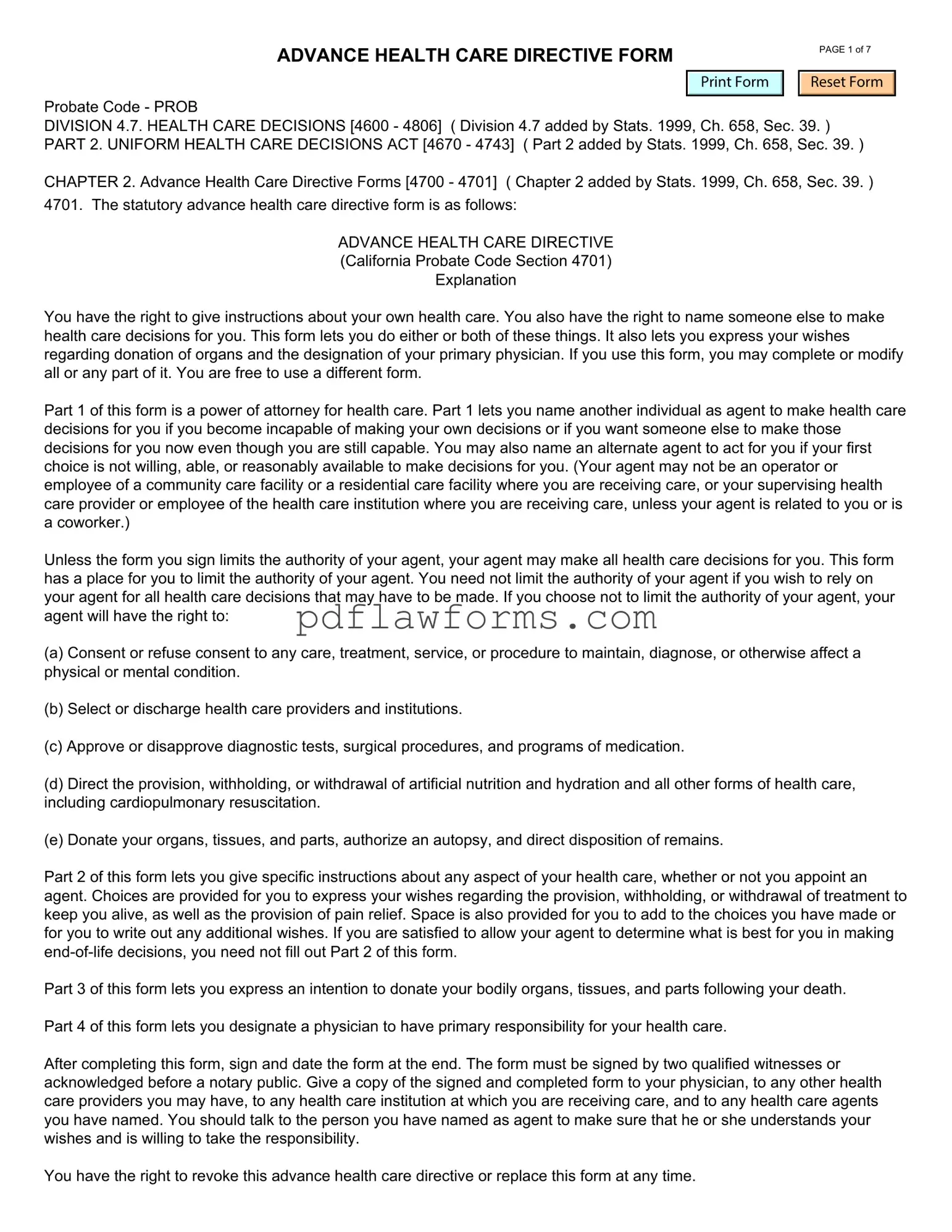When completing the California Advanced Health Care Directive form, individuals often make several common mistakes that can lead to confusion or complications later on. One frequent error is failing to clearly identify a health care agent. This person is responsible for making medical decisions on your behalf if you are unable to do so. Without a clearly designated agent, your wishes may not be honored, and decisions may fall to someone you did not intend.
Another mistake is neglecting to discuss your wishes with your chosen health care agent. It’s crucial that this person understands your preferences regarding medical treatment and end-of-life care. If your agent is unaware of your desires, they may struggle to make decisions that align with your values, potentially leading to outcomes you would not have wanted.
People also often forget to sign and date the document. A signature is essential for the directive to be valid. Without it, your directive may not be recognized by health care providers. Additionally, it is important to have witnesses present during the signing process. Failing to include the required number of witnesses can invalidate the directive, leaving your health care decisions unprotected.
Another common error is not updating the directive when circumstances change. Life events, such as a new diagnosis or changes in relationships, can affect your health care preferences. Regularly reviewing and, if necessary, revising your directive ensures that it accurately reflects your current wishes.
Some individuals overlook the importance of including specific instructions regarding medical treatment. Vague language can lead to misinterpretation of your desires. Providing clear, detailed instructions about the types of treatment you would or would not want can help avoid confusion and ensure your preferences are honored.
Additionally, people sometimes fail to provide copies of the directive to their health care agents and family members. Sharing this document ensures that those involved in your care are aware of your wishes. It also helps prevent misunderstandings during critical moments when decisions need to be made quickly.
Finally, individuals may not consider the implications of their choices regarding organ donation or other end-of-life decisions. These aspects should be addressed in the directive to provide comprehensive guidance to your health care agent and medical providers. By addressing these details, you can help ensure that your health care preferences are respected and followed.
